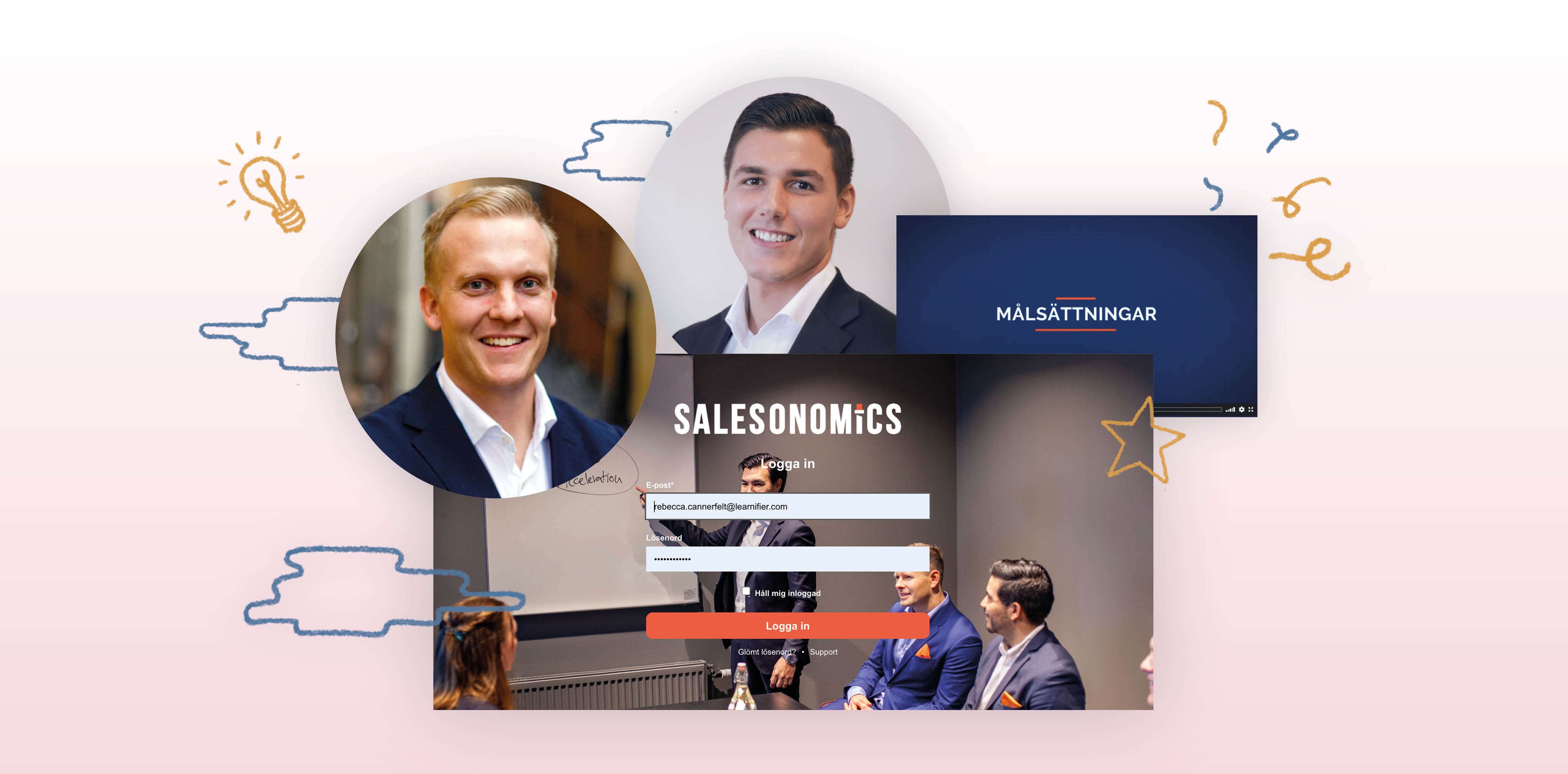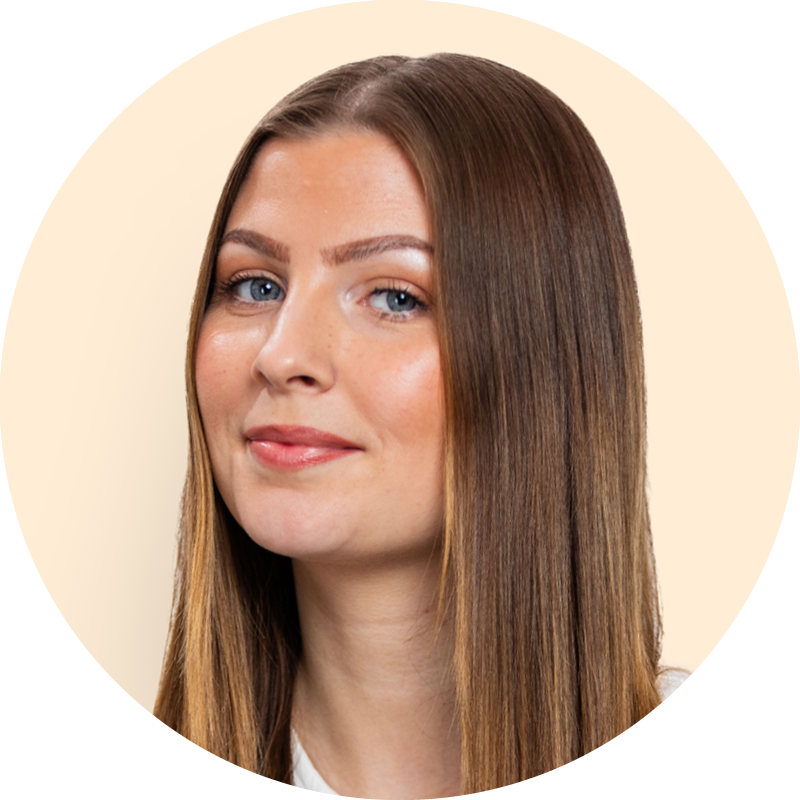What is a good way to onboard and train new employees to create long-term behavioral change and successful results? Ask Salesonomics!
In a very short time, Salesonomics have built up an efficient sales training program that helps new salespeople to quickly become productive and profitable. We took the opportunity to talk to the company's CEO Otto Dahlin and their Sales Acceleration Coordinator Simon Blanche to get an insight into how they work with digital learning.
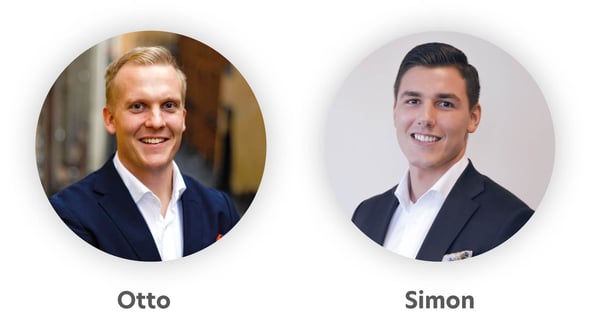
Hello Otto and Simon!
Tell us a little bit about Salesonomics.
Otto:
- Companies with great ambitions come to us to accelerate their sales and we enable a smart solution for them. We work with many areas that affect sales where we want to be a "one stop shop." More specifically, it is about us working with recruitment and onboarding, strategy development, sales training and marketing. Today, we are eleven employees and located on Kungsholmen in Stockholm.
We have two typical buyers of our services. One is the "scaleup company" with a manager who has many different focus areas and priorities. For example, it could be a CCO or Sales Manager. The other type is the more traditional companies that are on a change journey. In both cases, we can add value through knowledge, training and providing the organization with the right people.
Otto, explain your role at Salesonomics.
- I am the CEO and one of the Co-Founders of Salesonomics. I am involved in all parts of our business. I primarily run our recruitment business. In the role of CEO, I have the overall responsibility to keep all parts together and make sure we run in the right direction. In all my jobs, growth has been a clear focus, from starting and running new businesses to changing or "re-branding" organizations.
And Simon, what is your role and focus area?
- I work as a Sales Acceleration Coordinator, which was initially an "all-in-one role", and have been here for about a year. During my employment, the role has developed and today I am responsible for our marketing while simultaneously running various internal projects. Among other things, I am responsible for our learning platform Learnifier and our courses.
What’s the best part about your jobs?
Simon:
- I'm madly curious, and in my working role I get the opportunity to work very broadly with marketing and project management. This means that I also get to dive in and learn about many different topics in a short time, which I appreciate.
Otto:
- I love the opportunity to guest star in many different environments and realities. To be able to contribute with knowledge, tools, and the right skills to help people achieve their goals and dreams.
What is the biggest challenge?
Otto:
- We have a wide range of business areas, and there are slightly different challenges depending on which one we are talking about. But a common one is when people want "quick fixes", like when many salespeople are recruited in a short time, or when short training is supposed to generate quick results. Our business is about creating new behaviors and it needs to take its time.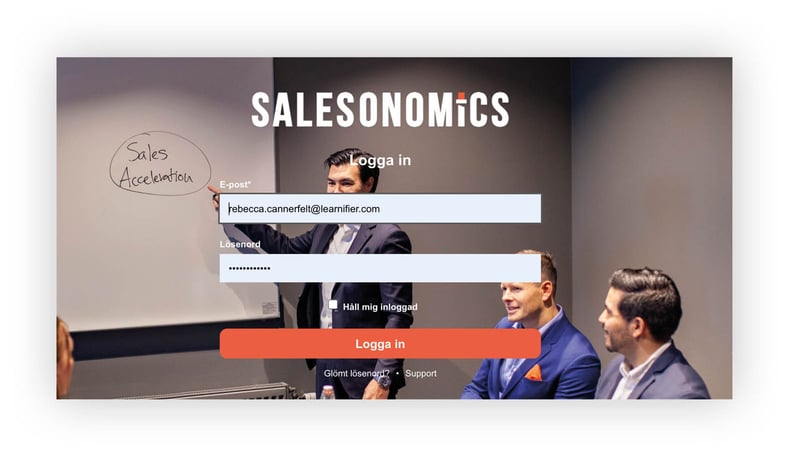
You work with a learning platform to share knowledge. Who are you conveying knowledge to through it and why?
Simon:
- The first area of use is our internal pre-boarding. We invite our new colleagues to that course before their first day of employment. In the course, they get to "meet" our founders, take part in reference videos, and read through basic information about Salesonomics.
- We also have our own sales training called Sales Acceleration Program. It is a digital version of our sales training program and is used both by us internally and externally. This is a blended learning experience and participants in the Sales Acceleration Program are expected to watch some sections of the digital platform prior to training sessions. This means that they are already familiar with the techniques and structures that we teach, which means that we can start training faster and maximize the physical meetings.
- The third area of use is a combination of our digital sales training and our onboarding offer. This means that our customers can give their newly hired salespeople the opportunity to go through the digital program for eight weeks. During these weeks, the salesperson will be able to take part in a lot of material, answer questions, and do several different tasks. It is also supplemented with a few automated emails to both the salesperson, a designated "buddy" or mentor, and his/her immediate manager.
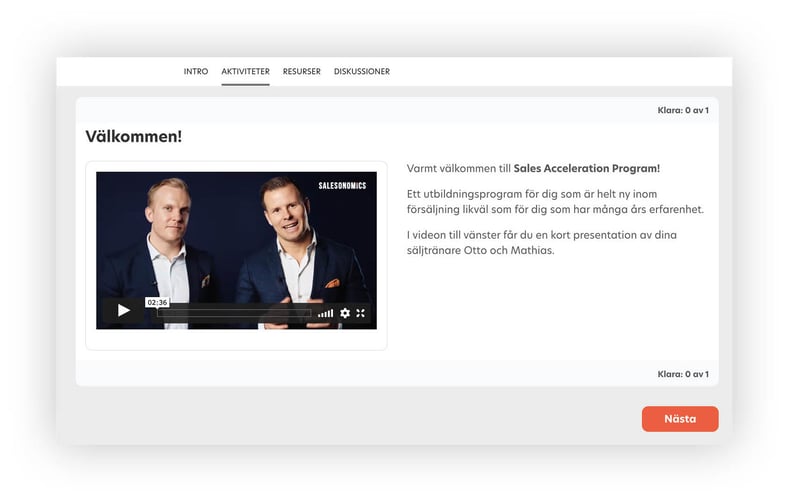
"Our sales training is delivered in a hybrid format. This means that the participants prepare for sales training opportunities in the digital tool and then spend more time training on our structures and models live (or digitally)".
How was this knowledge conveyed before?
Otto:
- The onboarding was mediated through a mix of 1:1 meetings and material that was emailed back and forth, such as PDFs and Powerpoint presentations. The sales training was mainly based on physical manuals and meetings. In cases where the sales training was carried out digitally, e-mail was used.
Simon:
- I came onboard just when we started using Learnifier. Naturally, it became one of my first projects. Initially, it was mainly about making our physical sales training, the Sales Acceleration Program, available in a digital format.
Given that we already had our sales program set, it was more about making it easy to absorb it in a digital format. We set aside a full day where we got professional help with video recording. The films were then delivered fully edited in a format that was easy to upload to the platform. Then, it was just to supplement all videos with texts and Powerpoint images.
Tell us about the content of your sales training and how you deliver it!
Simon:
- While pre-boarding is only self-study, our sales training is delivered in a hybrid format. This means that the participants prepare for sales training opportunities in the digital tool and then spend more time training on our structures and models live (or digitally). Our onboarding offer is more based on self-study and weekly follow-ups together with the immediate manager.
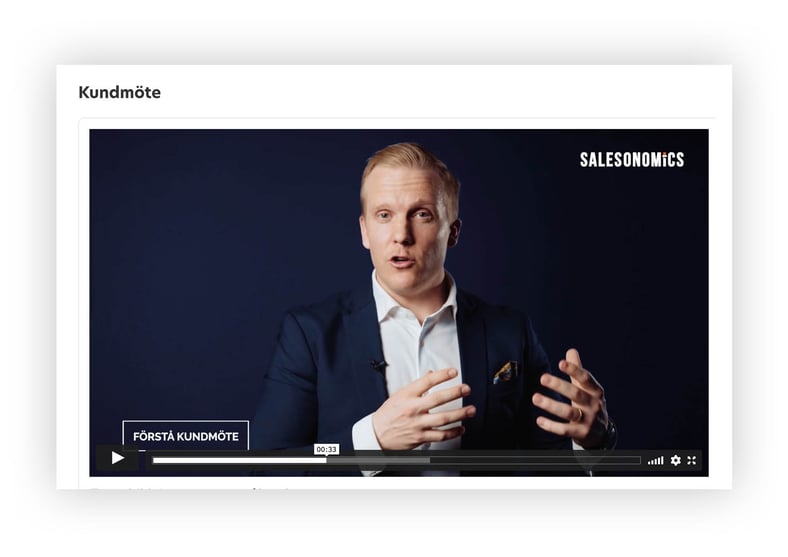
What content have you focused on and how did you create your classes? Who made them?
Simon:
- We use professionally recorded videos and supplementary texts, questionnaires, and automated emails. Since we had a lot of material from our physical sales training manuals, it was easy to enter it into Learnifier.
Mathias, Otto, and I have mostly created the content. I’ve written all texts, designed the course, and uploaded all videos. Mathias and Otto have acted as digital sales coaches, mostly in our videos. In the production work, we have received help with recording and editing from an external production company.
When we work with companies going to sales training, we clone our master course in Learnifier and create a company-adapted version where we invite the participants.
They usually log in to our Learnifier, but sometimes we work with customers who have Learnifier themselves and move the cloned template to their platform instead. Then it's meant to be their own training.
"For us, success is based on the plan we set – to get new and confused employees to be productive and profitable in as short a time as possible."
What does a typical learning journey from A to Z look like?
If "Anna" starts her new job, what happens?
Simon:
- When "Anna" starts, our responsible recruiter will hold a meeting to plan Anna's onboarding period with her manager. Based on that planning meeting, both Anna and her manager will each have a checklist linked to the initial employment period – things that they both need to do to make the onboarding as effective as possible and so that nothing is forgotten.
In the meantime, I make sure to set up a course in Learnifier via a course template. All I need from Learnifier is a name and an email address. Then I can register Anna in the course and the automated onboarding can begin.
The Sales Acceleration Program is scheduled to take eight weeks to complete. Throughout the journey, Anna will receive tasks via email outside the digital course. She will also receive an email every week summarizing what activities she should have completed. At the same time, Anna's manager will receive an email a week. There, the manager is asked to book a short reconciliation to talk more about what Anna has done in the program. What they are recommended to discuss varies from week to week, enabling exciting conversations.
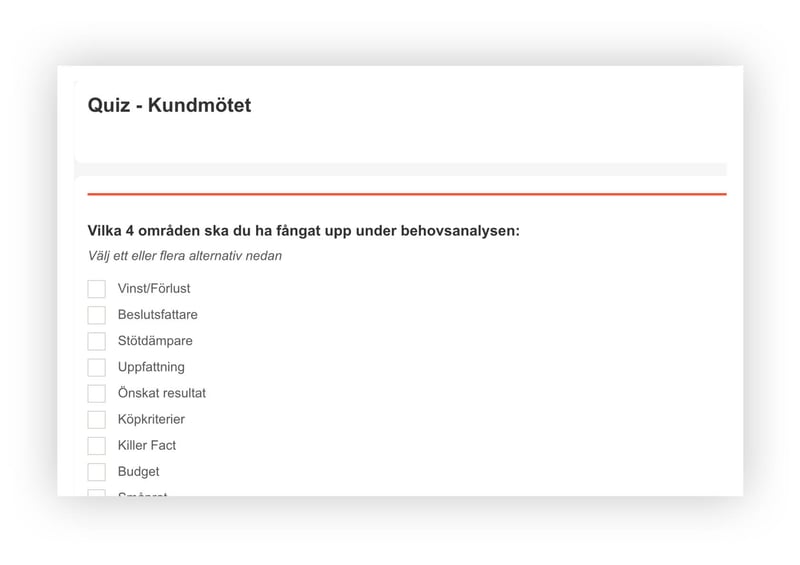
How do you measure success? What is a successful training?
Otto:
- Internally, we succeed based on the plan we set – to get new and confused employees to be productive and profitable in as short a time as possible. However, it is important to realize that sales results will always be an effect of being in the right kind of culture. A culture you can identify with, with good leadership, and a product/service you believe in.
Our training aims to create new behaviors. When we do, we succeed, but it's a little tricky to measure behavioral change. Of course, we follow up on our customers' training afterward, and then we can get a receipt for how it is going. "Do you work with the specific tools and knowledge?", "do you have a common language?" and so on.
We receive very nice emails from customers who, for example, express that they have closed their biggest deals ever or delivered within their budgets. Customers feel that we really helped them, although there may also be other factors that contributed during the same period.
How do the participants take in the knowledge? Via computer, mobile, tablets?
Simon:
- It's entirely up to each individual participant. Most people prefer the computer as it is easier to enter answers in our questionnaires. For hybrid sales training, they will take in knowledge both through our course portal and physical or digital live sessions. Someone might find it easier to use their phone, which is fine as well.
What's next?
Simon:
- We recently launched what I like to call Sales Acceleration Program 2.0. It is basically our sales training combined with a solid and automated onboarding for salespeople. The objective going forward is to get more participants into the platform. We will also continuously make updates on the courses we have to improve the content and create a better participant experience. We have also talked about making more of our sales training digital and about developing value-based courses for all candidates who apply for jobs through us at Salesonomics. We have several other ideas and time will tell what we choose to realize.
Otto:
- We will also look at how we can automate as much as possible in the courses.
What are your main tips and lessons from your journey of creating educations?
What would you say to someone who is just getting started?
Simon:
- Let the training take its time. There is no quick fix for creating behavioral changes.
- We really believe in using video. A tip linked to video is not to make it too big a project initially. It works well to record videos with the mobile camera.
- A somewhat technical yet valuable tip is to work a lot with the library view and to use templates. The difference is that you can update a video in the library view and automatically update all the places where the video is used. Unlike updating all videos in different courses and projects.
- Take help from your Customer Success Manager and the team at Learnifier. They have most likely faced similar challenges with other customers and can help you finish your course faster.
- And a final technical tip: Automations, automations, automations! It enhances the user experience and helps you as a course administrator to save a lot of time.
Interview by: Rebecca Cannerfelt
_______________
Experience the learning platform that Salesonomics use
for onboarding and training!
Over 300 companies and organizations around
the world work with Learnifier for their onboardings, training and skills development.
Find out why by booking a demo or trying our tool for free.
.png?width=153&height=58&name=Learnifier%20TextLogo%20NearBlack%20-%20PNG%20MEDIUM%20-%20800px%20(2).png)
